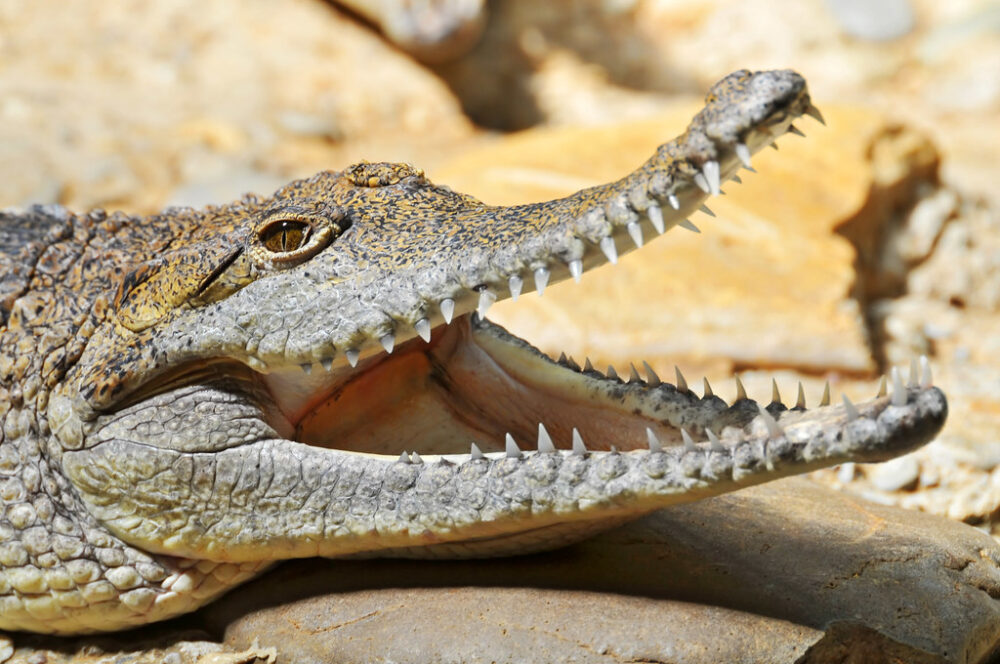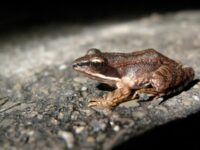Sixty-five million years ago — a time popularized by shows and movies like “The Land Before Time” and “Jurassic Park”. With that being said, we often think of dinosaurs through their remains: fossils, fragments of bone, and skeletons encapsulated in rocks and dust, providing a glimpse into the past. However, what if we could view the past through something alive? Crocodiles — living fossils — can provide that lens, having survived the mass extinction to remain one of planet Earth’s top predators.
But what adaptations allowed this remarkable species to persist when so many did not? First, it is important to understand what took place during the mass extinction at the end of the Cretaceous. Scientists believe that an asteroid, coupled with volcanic eruptions and climate change, led to the sudden disappearance of dinosaurs, ammonites, pterosaurs, and many other species. Essentially, the environment changed so quickly that the dinosaurs could not adapt and survive. Notably, and perplexingly, crocodiles did not need to adapt quickly to such a catastrophe — they were already prepared from the get-go.
Perplexingly, crocodiles did not need to adapt quickly to such a catastrophe — they were already prepared from the get-go.
Researchers at the University of Bristol were surprised to find that crocodiles follow what is known as “punctuated equilibrium.” Essentially, evolutionary change for crocodiles is extremely slow, but any environmental or abiotic forces, from gradual climate change to an asteroid, will rapidly speed up the process. Specifically, in the case of crocodiles, they were able to increase their body size as the Earth’s temperature increased.
In his doctoral thesis, Maximilian Stockdale from the University of Bristol found a strong correlation between time, temperature, and body size of crocodylomorphs — or the general group of reptiles that includes crocodiles and their relatives. Stockdale used a machine learning algorithm and counted the lineages to create phylogenetic, or evolutionary, trees. He divided these diagrams into intervals of one million years, placing each crocodile species at times it was extant. For each time interval, extinct species were removed, and Stockdale noted when species first and last appeared. Through calculations and graphical analysis, Stockdale found the evolutionary rate, or the speed of genetic change in a lineage, for crocodiles as a whole. He then compared body size, a good indicator of growth, and population size to the environmental factor of temperature.
The results showed that diversity increased throughout the Mesozoic Era slowly, peaked in the late Cretaceous, and then dipped during the mass extinction. These results made sense as the temperature was higher during the Mesozoic Era, allowing for more diversity and ergo larger species of crocodiles. Furthermore, the results supported the idea of punctuated equilibrium in crocodiles — the mass extinction was large enough to promote sudden decreases in diversity. Unlike many dinosaurs, this decrease in diversity did not result in the complete extinction of the species. While some crocodylomorphs, especially the larger ones that depended on warmer climates, did die out, smaller crocodiles that evolved more slowly did not increase in size during the warm Eras preceding the mass extinction. These crocodiles were able to survive in the cooler aftermath of this event through a slower evolution.
Incredibly, crocodiles have survived millions and millions of years, through many global temperature changes and mass extinctions. They have adapted to their new environments, only to become threatened and endangered at the hands of humans. Habitat loss, hunting, and other human interventions have caused seven out of 24 species of crocodiles to be critically endangered. Even an asteroid 65 million years ago could not cause this devastation. The evolution of crocodiles has provided a window into Earth’s past, but the rate at which humans are destroying the planet means there might not be any living fossils left to teach us about the past or provide insight into our future. Hopefully, conservation efforts can support these spectacular creatures, helping to slowly but surely foster their return to resiliency.
Hopefully, conservation efforts can support these spectacular creatures, helping to slowly but surely foster their return to resiliency.
Sources:
https://www.heritagedaily.com/2021/01/research-explains-why-crocodiles-changed-so-little-since
-age-of-dinosaurs/136701
https://research-information.bris.ac.uk/en/studentTheses/macroevolution-of-the-crocodylomorpha






